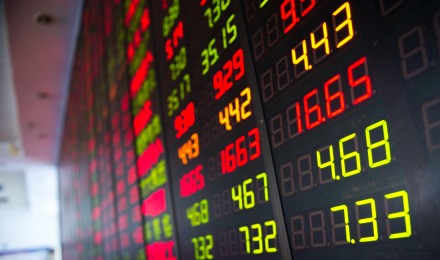One of the most widely reported gauges of volatility, the trusty VIX, may not be so “trusty” anymore. For those of you unfamiliar with this particular measurement here’s a brief excerpt from investopedia:
The ticker symbol for the Chicago Board Options Exchange (CBOE) Volatility Index, which shows the market’s expectation of 30-day volatility. It is constructed using the implied volatilities of a wide range of S&P 500 index options.
Basically, what the VIX does is show how anxious investors are or are not at one particular time. It goes up and down based on option activity. If, for example, the put and/or call option prices are unusually high then it is surmised that investors are expecting the stocks to move in an unusually rapid pace (either up or down). On the other hand if options prices are trading extremely close to the price at expiration, then it is usually considered that investors are feeling that prices are likely to be steady. This latter reading is often referred to on CNBC (and Wall Street in general) as “complacency” and often taken as a bullish sign. When the index is high many regard that as a sign of worry or anxiety, and is part of the reason the VIX is often referred to as the “fear gauge”. It has always been a bit dubious how useful the VIX (and other, similar measures) actually is in trading, most especially for the average investor. But, it is a quick and easy index that does show potential volatility and can make analysts on TV sound knowledgeable (and I often think that is the primary point of the VIX!). But whatever your views on the usefulness of the VIX in the past it may have already been fouled up by Wall Street. The global head of equity trading at Citi, Mike Pringle, has a bit of a heads up note of caution regarding the utility of the much followed VIX:
“A big mistake the market makes is looking at the VIX as an indicator of stock market risk. Why? Because it’s an asset class and it’s more traded for yield than protection,” Pringle said.
“The growth of structured products around VIX drove that move. In most cases, the VIX is sold to generate yield but during some stress periods, the weakness in the spot level triggers significant computer-generated technical buying from these products,” he said.
What that means is that Wall Street has figured out a way to use the VIX to capture the income (for themselves — not you) and have thus been using the index in a way that makes it difficult to rely on. Theoretically, when volatility is at extremes it still has its usefulness (if you can call it that) but the general reading has now been skewed by these “structured products”. As you can probably tell, while certainly an interesting tool, outside of extremely short term moves I have always been a bit skeptical about the overall benefits of the index. Still, it has always been a popular gauge and the fact that it has been at least somewhat compromised is something that, for traders especially, should be noted.
One of the most widely reported gauges of volatility, the trusty VIX, may not be so “trusty” anymore. For those of you unfamiliar with this particular measurement here’s a brief excerpt from investopedia:
The ticker symbol for the Chicago Board Options Exchange (CBOE) Volatility Index, which shows the market’s expectation of 30-day volatility. It is constructed using the implied volatilities of a wide range of S&P 500 index options.
Basically, what the VIX does is show how anxious investors are or are not at one particular time. It goes up and down based on option activity. If, for example, the put and/or call option prices are unusually high then it is surmised that investors are expecting the stocks to move in an unusually rapid pace (either up or down). On the other hand if options prices are trading extremely close to the price at expiration, then it is usually considered that investors are feeling that prices are likely to be steady. This latter reading is often referred to on CNBC (and Wall Street in general) as “complacency” and often taken as a bullish sign. When the index is high many regard that as a sign of worry or anxiety, and is part of the reason the VIX is often referred to as the “fear gauge”. It has always been a bit dubious how useful the VIX (and other, similar measures) actually is in trading, most especially for the average investor. But, it is a quick and easy index that does show potential volatility and can make analysts on TV sound knowledgeable (and I often think that is the primary point of the VIX!). But whatever your views on the usefulness of the VIX in the past it may have already been fouled up by Wall Street. The global head of equity trading at Citi, Mike Pringle, has a bit of a heads up note of caution regarding the utility of the much followed VIX:
“A big mistake the market makes is looking at the VIX as an indicator of stock market risk. Why? Because it’s an asset class and it’s more traded for yield than protection,” Pringle said.
“The growth of structured products around VIX drove that move. In most cases, the VIX is sold to generate yield but during some stress periods, the weakness in the spot level triggers significant computer-generated technical buying from these products,” he said.
What that means is that Wall Street has figured out a way to use the VIX to capture the income (for themselves — not you) and have thus been using the index in a way that makes it difficult to rely on. Theoretically, when volatility is at extremes it still has its usefulness (if you can call it that) but the general reading has now been skewed by these “structured products”. As you can probably tell, while certainly an interesting tool, outside of extremely short term moves I have always been a bit skeptical about the overall benefits of the index. Still, it has always been a popular gauge and the fact that it has been at least somewhat compromised is something that, for traders especially, should be noted.







